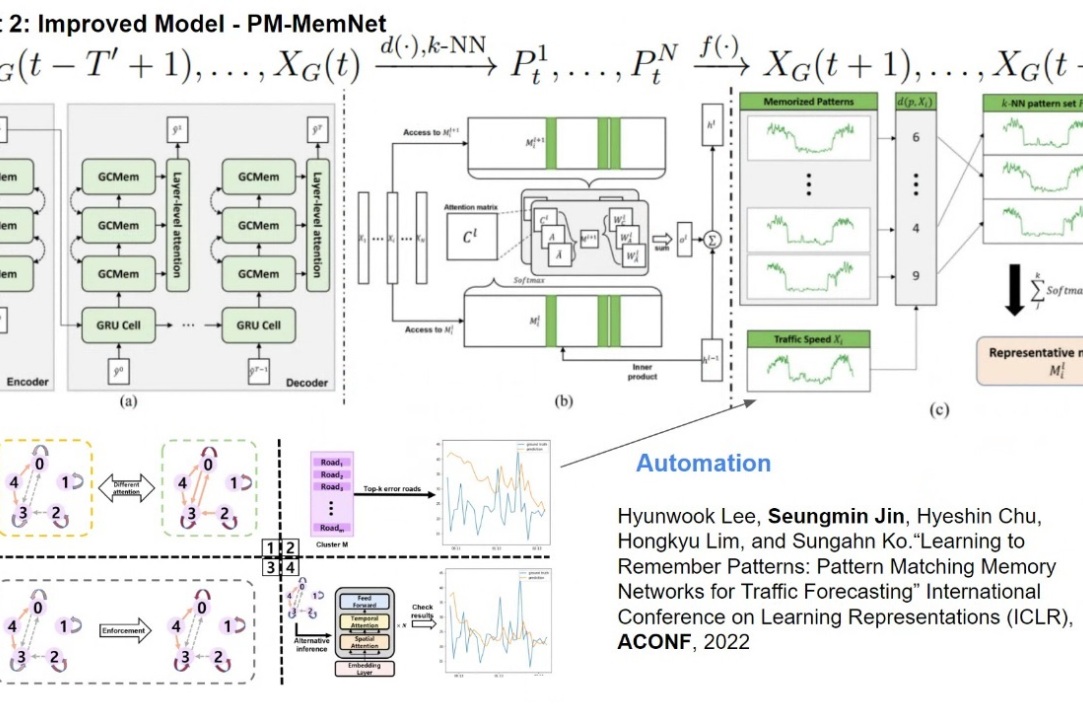Семинар МЛ ИССА "A Visual Analytics System for Explaining and Improving Attention-based Traffic Forecasting Models "
26 сентября 2023 г. в 15:30 в рамках семинара "Математические модели информационных технологий" департамента анализа данных и искусственного интеллекта и МЛ "Интеллектуальных систем и структурного анализа" под руководством С.О. Кузнецова состоится в формате онлайн конференции предварительная защита кандидатской диссертации Джина Сеунгмина.Научный руководитель: доктор компьютерных наук, PhD, доцент департамент анализа данных и искусственного интеллекта Кертес-Фаркаш Аттила.

Abstract: Traffic congestion is a significant challenge in urban areas worldwide, necessitating accurate traffic forecasting for efficient traffic management. Spatio-temporal graph attention networks, particularly the ST-GRAT model, have shown promise in this domain by capturing complex spatial and temporal dependencies. However, the black-box nature of these models and the complexity of traffic data pose challenges in understanding their behavior and improving their performance.
This dissertation presents a comprehensive exploration of improving spatio-temporal data analysis and traffic forecasting through the development of novel models and visualization tools. It introduces the Spatio-Temporal Graph Attention Network (ST-GRAT), a multi-layered model incorporating spatial and temporal attention mechanisms, designed to discern intricate patterns and relationships within complex spatio-temporal datasets.
To address the challenges of understanding and enhancing ST-GRAT, the dissertation introduces AttnAnalyzer, an innovative visualization analytics system. AttnAnalyzer empowers researchers and practitioners to gain deeper insights into the model's inner workings by visualizing attention distributions and interactive representations of learned dependencies.
Leveraging insights from AttnAnalyzer, the dissertation presents Pattern-Matching Memory Networks (PM-MemNet), an advanced iteration of ST-GRAT. PM-MemNet employs pattern-based memory representation to enhance forecasting accuracy and robustness. This integration of state-of-the-art neural architectures with innovative visualization techniques demonstrates the potential of holistic model development.
The contributions extend beyond theory to practical advancements in spatio-temporal data analysis, offering a framework for tackling data intricacies. The methodologies and insights presented have the potential to revolutionize applications, from urban planning to traffic management, by providing accurate predictions and actionable insights.
As the dissertation concludes, it acknowledges the dynamic nature of data analytics and inspires future researchers to explore new horizons in the evolving landscape of spatio-temporal data analysis.
